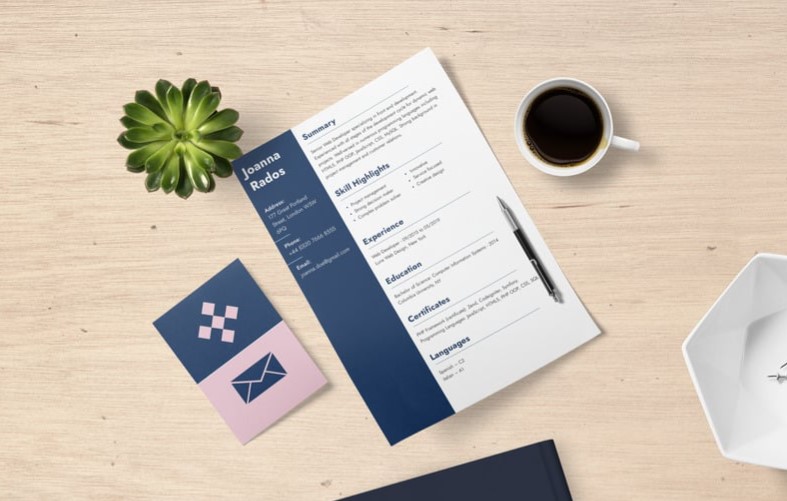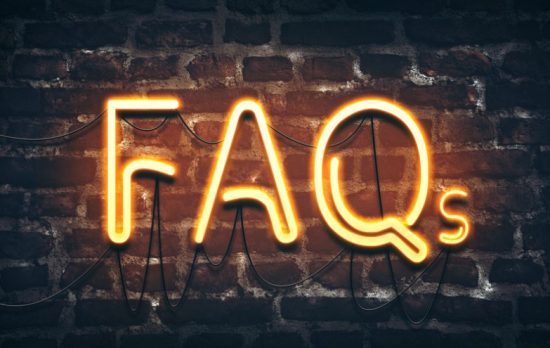Are you a job seeker in Canada and wondering what the perfect resume format is? You’re lucky, though, because we’ve got you covered! The Canadian Resume Format is more than just a piece of paper; it’s your ticket to landing your dream job. But with so many variations, how do you know which one to use? In this blog post, we’ll break down everything you need to know about the Canadian Resume Format and provide tips on making yours stand out from the crowd.
What is the Canadian Resume Format?

The Canadian resume format is a document used by job seekers in Canada when applying for jobs. The resume format is similar to the chronological resume, but some key differences exist. For instance, the Canadian resume format includes sections on skills and abilities, work experience and education.
When creating a Canadian resume, it is important to keep the following points in mind:
- Use clear and concise language
- Highlight your relevant skills and experience
- Modify your resume to the particular position you’re looking for
- Use reverse chronological arrangement, starting with the most recent occurrences
- Constrict your resume to no more than two pages
Following these tips will help you create a strong Canadian resume to increase your chances of getting hired.
Key Differences Between the Canadian and American Resumes
While the Canadian and American resume formats share many similarities, there are some key differences that you should be aware of before applying for jobs in Canada.
Here are a handful of the more significant variations:
Length
Generally, Canadian resumes are shorter than their American counterparts. This is because employers in Canada tend to value quality over quantity when it comes to your work experience and skills. As such, you should focus on highlighting your most relevant experiences and skills rather than trying to include everything you’ve ever done.
Formatting
How information is presented on a Canadian resume is also different from how it is presented on an American resume. For example, Canadian resumes typically use reverse chronological order (with your most recent experiences and education listed first), whereas American resumes often use a more skills-based approach.
Tone
Another key difference between Canadian and American resumes is the tone that is used. Whereas American resumes tend to be more formal and “to the point,” Canadian resumes are often more relaxed and personable. This is because employers in Canada emphasize finding candidates who will fit in well with their company culture. As such, it’s important to let your personality shine through in your resume so that employers can get a sense of who you are as a person.
What Information Should Be Included in a Canadian Resume?

The following information should be included in a Canadian resume:
- Personal information should include your name, address, telephone number, and email address.
- Objective – A brief statement outlining your career goals.
- Education – Include the names and locations of all schools you have attended, as well as the dates you were there and the degrees/diplomas you earned.
- Work experience – List your employment history in chronological order, starting with your most recent job. Include the company name, your job title, and the dates of employment. For each position, describe your key responsibilities and accomplishments.
- Skills – List any skills that are relevant to the position you are applying for, such as computer skills or language fluency.
- References – Include the names and contact information of three professional references who can speak to your work ethic and abilities
How to Format a Canadian Resume?
If you are looking for a job in Canada, you will need to format your resume differently than you would if you were applying for a job in the United States. The Canadian resume format is not as rigid as the American resume format. In fact, it is quite different.
There are three common ways to format a Canadian resume: chronological, functional, and hybrid.
Chronological: This type of resume starts with your most recent work experience and then works its way backwards. This is the most common type of resume format in Canada.
Functional: A functional resume puts more emphasis on your talents and abilities than on your previous employment. This can be a good option if you have gaps in your employment history or if you are changing careers.
Hybrid: A hybrid resume is a combination of chronological and functional formats. It starts with a summary of your skills and abilities followed by a chronology of your employment history.
When formatting your Canadian resume, there are a few other things to keep in mind:
- Include your contact information at the top of the page (name, address, phone number, email address).
- To organize your content, use headings and subheadings that are unambiguous.
- Start each section with strong action verbs (e.g., “developed,” “managed,” “created”).
- Quantify your accomplishments whenever possible (e.g., “increased sales
Tips for Writing a Winning Canadian Resume

It is important to remember that the Canadian resume format is not the same as the American resume format. There are a few key differences that you will want to take into account when writing your Canadian resume.
Here are some tips to help you write a winning Canadian resume:
Use a professional-sounding email address: When writing your Canadian resume, be sure to use a professional-sounding email address. This will ensure that potential employers take you seriously.
List your education and work experience in chronological order: Be sure to list your education and work experience in chronological order on your Canadian resume. This will help potential employers understand your qualifications and experience levels.
Use bullet points: When listing information on your Canadian resume, be sure to use bullet points. This will make it easier for potential employers to scan and understand the information you are providing.
Highlight your skills and qualifications: Be sure to highlight your skills and qualifications on your Canadian resume. This will help potential employers see why you are a good fit for the position they are hiring for.
Tailor your resume for each job: When applying for jobs in Canada, be sure to tailor your resume specifically for each position you apply for. This will show potential employers that you have taken the time to research their company and understand what they are looking for in a candidate.
Conclusion
The Canadian resume format is unique and can be a bit tricky to figure out, but with the right guidance, you’ll be able to craft an effective one that will help you land your dream job. By utilizing our advice on what should go into the document and taking advantage of online resources such as templates and examples, you’ll ensure that your resume stands out from the crowd. With these tips in mind, start creating your own Canadian-style resume today!
FAQ – What is the Canadian Resume Format?
1. Do Canadians call it a CV or a resume?
As a Canadian, you may be wondering if you should call your document a CV or a resume. The answer is that it depends on your audience and what you are using the document for. If you are applying for a job in academia or research, then you will likely need to submit a CV. However, a resume will probably suffice if you are applying for a job in the private sector.
There are some differences between CVs and resumes, but they are not major. For the most part, you can use either term interchangeably.
2. What is the paper size of a Canadian resume?
The paper size of Canadian resumes is 8.5″ x 11″. This is the standard letter size in North America and is the most common size for resumes. If you are using a different paper size, be sure to check with your potential employer to see if they have any specific requirements.
3. What is the most common type of resume in Canada?
There are a few different types of resumes that are common in Canada. The most popular type is the chronological resume. This type of resume lists your work experience in reverse chronological order, with your most recent positions listed first.
Other common types of resumes include functional resumes and combination resumes. Functional resumes place more emphasis on your talents and abilities than on your previous employment. They can be a good option if you have gaps in your employment history or if you’re changing careers. Combination resumes are a mix of chronological and functional formats and can be a good option if you have both strong work history and transferable skills.
4. What not to include in Canadian resume?
- Do not include a photo of yourself unless specifically asked to do so.
- Don’t mention your age or date of birth
- Do not include your marital status or number of children you have.
- Do not include information about your religion or political affiliation.
- Do not include your height, weight, or other physical characteristics.
- Do not mention your Social Insurance Number (SIN).
- Do not mention the information about your health or the disabilities you have.
- Do not use “I” or “me” in your resume – it should be written in the third person.
- Do not use slang, abbreviations, or acronyms in your resume.
5. What are the 3 resume types?
The three types of resumes are chronological, functional, and hybrid.
Chronological resumes list your work history in reverse chronological order, starting with your most recent position and going back in time. This type of resume is the most common and is a good choice if you have a strong work history with consistent employment.
Functional resumes focus on your skills and experience rather than on your work history. This type of resume is a good choice if you have gaps in your employment history or are changing careers.
Hybrid resumes are a combination of chronological and functional formats. They typically start with a summary of your skills and experience followed by a chronology of your employment history. Hybrid resumes are a good choice if you want to highlight both your skills and your work history.











